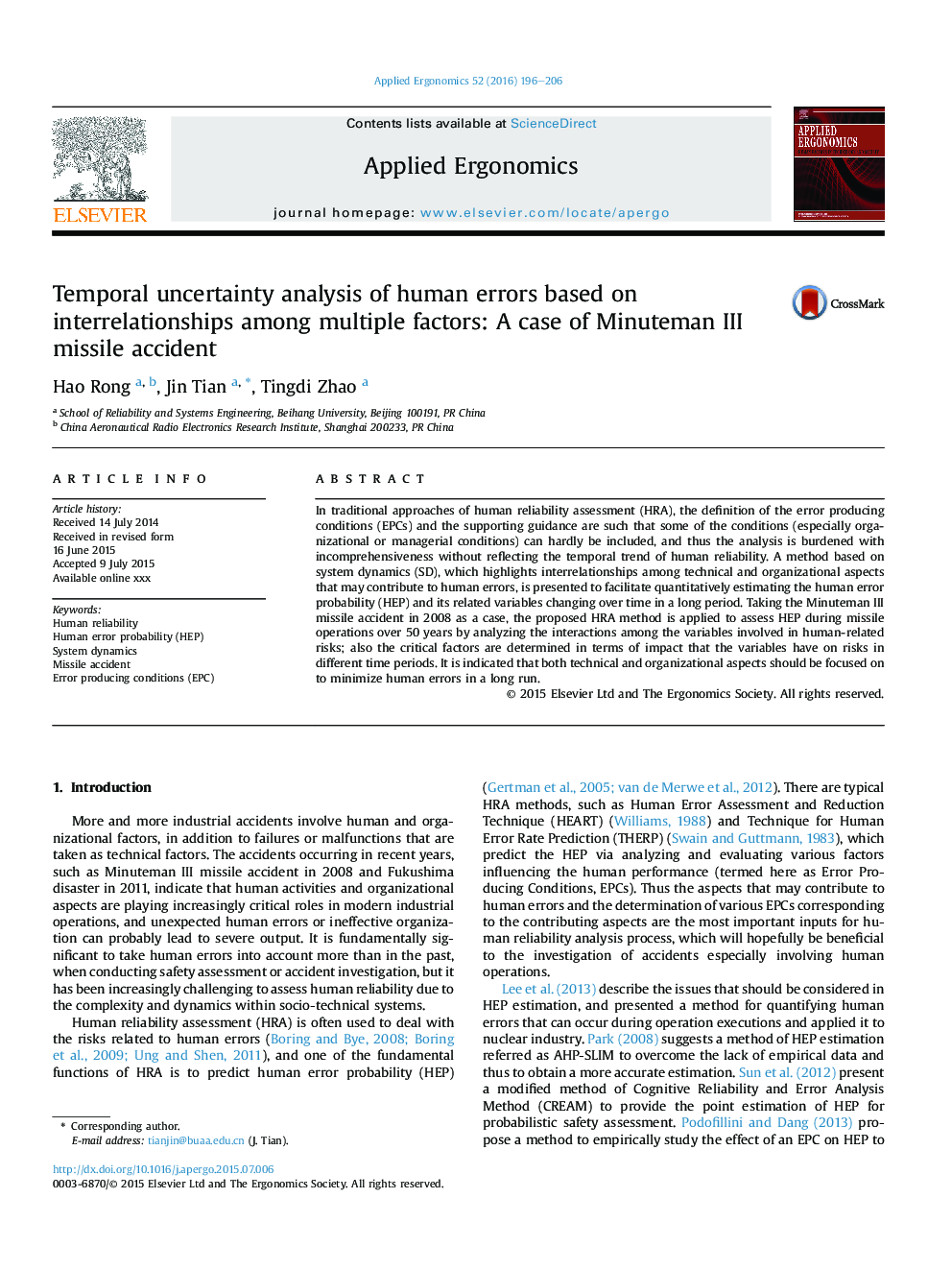| Article ID | Journal | Published Year | Pages | File Type |
|---|---|---|---|---|
| 6947934 | Applied Ergonomics | 2016 | 11 Pages |
Abstract
In traditional approaches of human reliability assessment (HRA), the definition of the error producing conditions (EPCs) and the supporting guidance are such that some of the conditions (especially organizational or managerial conditions) can hardly be included, and thus the analysis is burdened with incomprehensiveness without reflecting the temporal trend of human reliability. A method based on system dynamics (SD), which highlights interrelationships among technical and organizational aspects that may contribute to human errors, is presented to facilitate quantitatively estimating the human error probability (HEP) and its related variables changing over time in a long period. Taking the Minuteman III missile accident in 2008 as a case, the proposed HRA method is applied to assess HEP during missile operations over 50 years by analyzing the interactions among the variables involved in human-related risks; also the critical factors are determined in terms of impact that the variables have on risks in different time periods. It is indicated that both technical and organizational aspects should be focused on to minimize human errors in a long run.
Keywords
Related Topics
Physical Sciences and Engineering
Computer Science
Human-Computer Interaction
Authors
Hao Rong, Jin Tian, Tingdi Zhao,
